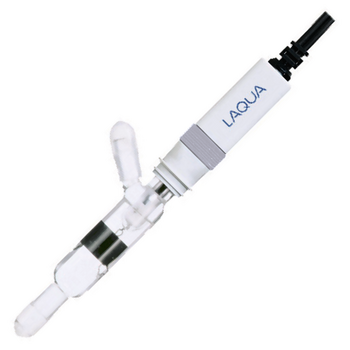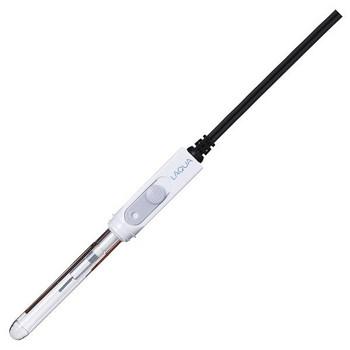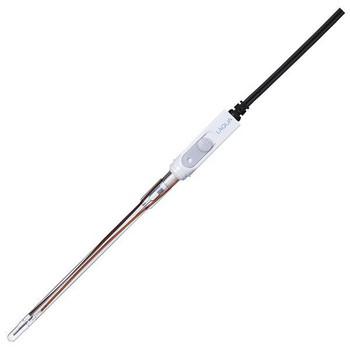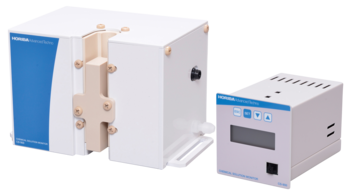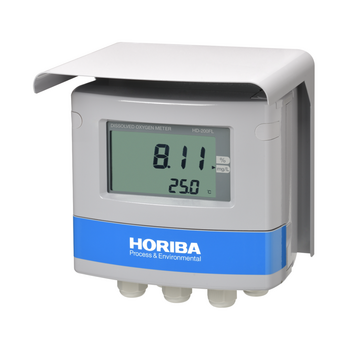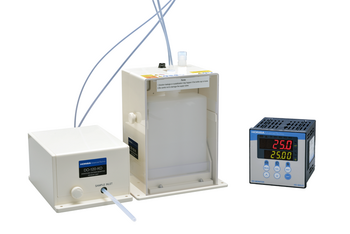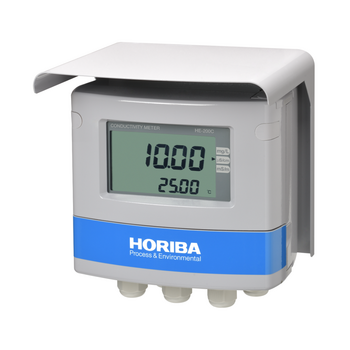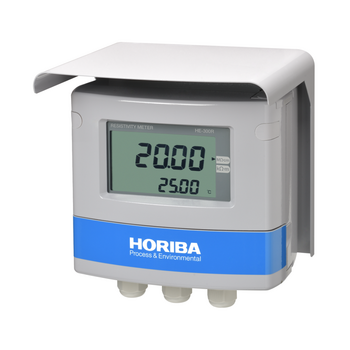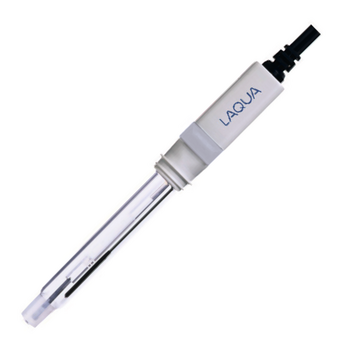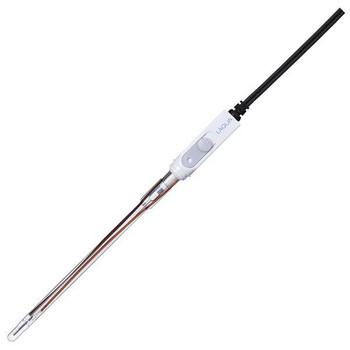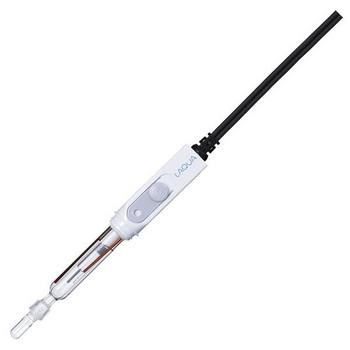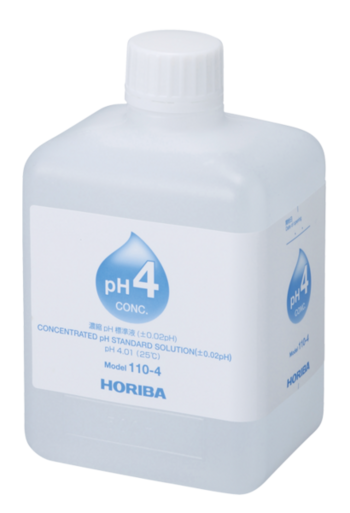| Product name | pH meter | |||
|---|---|---|---|---|
| Model | HP-300 | |||
| Combined sensor | Glass electrode | |||
| Measurable range | pH | pH0 to pH14 (display range: pH−1 to pH15) | ||
| Temperature | 0℃ to 100℃ Display range when automatic detection capability for each temperature sensor type is used: −10℃ to 110℃ Display range when temperature sensor type is manually set: −20℃ to 130℃ | |||
| Display resolution | pH | 0.01 pH | ||
| Temperature | 0.1℃ | |||
| Performance | pH | Repeatability | Within ±0.03 pH (response for equivalent input) | |
| Linearity | Within ±0.03 pH (response for equivalent input) | |||
| Temperature | Repeatability | ±0.3℃ (response for equivalent input) | ||
| Linearity | ±0.3℃ (response for equivalent input) | |||
| Transmission output | Output type | 4 mA to 20 mA DC: input/output isolated type | ||
| Load resistance | Maximum: 600Ω Case of 24 V DC power supply (*Note 1) | |||
| Linearity | Within ±0.08 mA (output only) | |||
| Repeatability | Within ±0.08 mA (output only) | |||
| Output range | pH: Selection from preset ranges or free range input within measuring range. | |||
| Occasional out for error | Hold or burnout to either 3.8 mA or 21 mA | |||
| Transmission hold | In the maintenance mode, transmission signal is held at the latest value or preset value. In the calibration mode, transmission signal can be alive or held. | |||
| Contact input | Number of input points | 1 | ||
| Contact type | No-voltage "a" contact for open collector | |||
| Conditions | ON resistance: 40 Ω Open voltage: 1.2 V Short-circuit current: 21 mA DC max. | |||
| Contact function | External input for transmission holding. | |||
| Temperature compensation | Applicable temperature element | Platinum resistor: 1 kΩ (0℃) | ||
| Positive relation resistor with temperature :500 Ω (25℃), 6.8 kΩ (25℃), 10 kΩ (25℃) | ||||
| Element selection method | Automatic temperature sensor type detection or manual selection (No temperature element is selectable) | |||
| Temperature compensation range | 0℃ to 100℃ | |||
| Temperature calibration | 1 point calibration comparing reference thermometer | |||
| Calibration | Calibration method | Auto or basic (manual) calibration | ||
| Number of calibration points | Selectable from 1, 2, and 3 points | |||
| Kinds of standard solutions | pH 2, 4, 7, 9, 10 | |||
| Any pH standard solution (with difference of 2 pH or more) for basic calibration | ||||
| Additional capabilities | Automatic detection of kind of standard solution | |||
| Automatic detection of electric potential stability | ||||
| Automatic detection of calibration failure (asymmetry potential, sensitivity, or response time) | ||||
| Calibration history (asymmetry potential, sensitivity, and number of days elapsed after last calibration) | ||||
| Self-check | Calibration error | Asymmetry potential error, sensitivity error, and response time error | ||
| Temperature calibration error | ||||
| Standard solution detection error | ||||
| Electrode diagnostic error | Cracking of glass response membrane | |||
| Reference electrode impedance error (only applicable for differential circuit mode with a liquid ground electrode) | ||||
| Temperature sensor short-circuit, temperature sensor disconnection, and deviation from temperature measurement range | ||||
| Meter error | CPU, ADC, and EEPROM errors | |||
| Operating temperature range | −20℃ to 60℃ (without freeze) | |||
| Operating humidity range | Relative humidity: 5% to 90% (without condensation) | |||
| Storage temperature | −25℃ to 65℃ | |||
| Power supply | Rated voltage | 24 V DC (operating voltage range: 21 V to 32 V DC) (*Note 1) | ||
| Power consumption | 0.6 W max. | |||
| Compatible standards | CE marking | Compatible standards | EMC directive | EN61326-1 |
| RoHS Directive | EN50581 | |||
| Immunity | Industrial electromagnetic environment | |||
| Electostatic discharge | IEC61000-4-2 | |||
| Electromagnetic field of radiated radio frequency | IEC61000-4-3 (*Note 2) | |||
| Electric fast transient/burst | IEC61000-4-4 (*Note 2) | |||
| Surge | IEC61000-4-5 (*Note 3) | |||
| Conducted interference induced by radio frequency | IEC61000-4-6 (*Note 2) | |||
| Emission | Class A | |||
| Radiated disturbance | CICPR 11 CLASS A | |||
| FCC rules | Part15 CLASS A | |||
| Structure | Installation | Outdoor installation type | ||
| Installation method | Mount on 50 A pole or wall | |||
| Protection code | IP65 | IEC60529, JIS C0920 | ||
| Case material | Aluminum alloy (coated with epoxy-denatured melamine resin) | |||
| Material of fittings | SUS304 | |||
| Material of hood | SUS304 stainless steel (coated with epoxy-denatured melamine resin) | |||
| Material of window | Polycarbonate | |||
| Display element | Reflective monochrome LCD | |||
| External dimensions | 180 (W) mm × 155 (H) mm × 115 (D) mm (excluding mounting brackets) | |||
| Mass | Main body: Approx. 2.8 kg cover and mounting brackets: Approx. 1 kg | |||
Note
- Note 1: The maximum load resistance is available within the range shown in the figure below, depending on power supply voltage:
Relation between power supply voltage and load resistance

- Note 2: The standard for effect on the reading by the electromagnetic field of the radiated radio frequency and by the conducted interference is within the measured pH value 0.1 pH.
- Note 3: When the sensor cable, the transmission cable, or the contact input cable is extended by 30 m or more, the surge test under the EMC Directive for CE marking is not applied.
- Note 4: An arrester (spark over voltage: 400 V) is implemented for transmission output, contact input, and communication. However, use a most suitable surge absorption element on the connection lines in accordance with the ambient environment, the situation of equipment installed, and the externally connected equipment.








